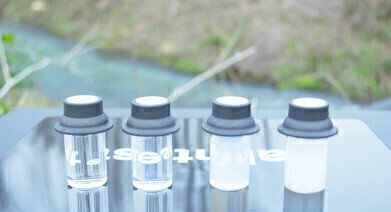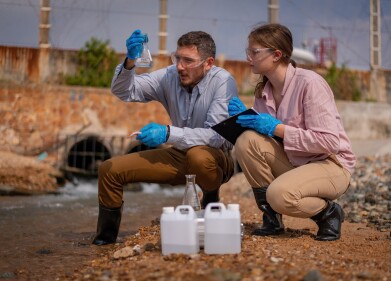Water/wastewater
Turbidity Made Clear From Palintest
Jan 29 2018
Turbidity is the cloudiness of a fluid, caused by suspended particles which scatter light.
Water almost always contains suspended solids, consisting of particles of varying sizes and properties, which are usually invisible to the naked eye. Many of these particles settle on standing. It is the particles which do not settle, termed colloidal solids, which cause the water to look turbid.
Turbidity of water is mainly caused by the presence of clay, soils, organic matter and micro-organisms, often from the run-off from industry, agriculture and domestic sources.
The measurement of turbidity is a key test of water quality, as higher turbidity levels can be an indicator for a number of issues. Turbidity is an optical measurement of the water, and therefore does not identify individual substances. However, a correlation can be formulated between turbidity and TSS, this needs to be handled with care as the correlation varies between sites and processes.
There are various ways of expressing turbidity values but one of the most common is the nephelometric turbidity unit (NTU).
The human eye is an excellent turbidity meter, capable of determining turbidity values as low as 4NTU. However, most UK water companies aim to reach a target of less than 1NTU at the drinking water treatment works, and no more than 4NTU from customer taps.
Although turbidity in potable water can be due to harmless parameters such as excessive aeration and high calcium levels, higher turbidity values can represent a health risk. To ensure that water is fit for purpose, the WHO has recommended that turbidity should be measured before and after each unit process at domestic and industrial water treatment facilities. This is because solids can compromise the efficiency of processes such as chlorination and UV disinfection. Chlorine used to ‘clean’ the water can be depleted by oxidising the solid material, reducing its effectiveness to eradicate the harmful micro-organisms. In addition, cloudiness in water will prevent adequate penetration of UV light, thereby affecting disinfection rates through UV treatment.
Palintest has a range of quick and simple methods for measuring turbidity. If you would like any further information about turbidity or how to effectively measure it, please contact our team.
Digital Edition
IET 35.2 March
April 2025
Air Monitoring - Probe Sampling in Hazardous Areas Under Extreme Conditions - New, Game-Changing Sensor for Methane Emissions - Blue Sky Thinking: a 50-year Retrospective on Technological Prog...
View all digital editions
Events
Apr 21 2025 Shanghai, China
Apr 22 2025 Hammamet, Tunisia
Apr 22 2025 Kintex, South Korea
Analytica Anacon India & IndiaLabExpo
Apr 23 2025 Mumbai, India
Apr 23 2025 Moscow, Russia



















